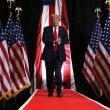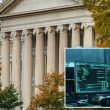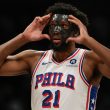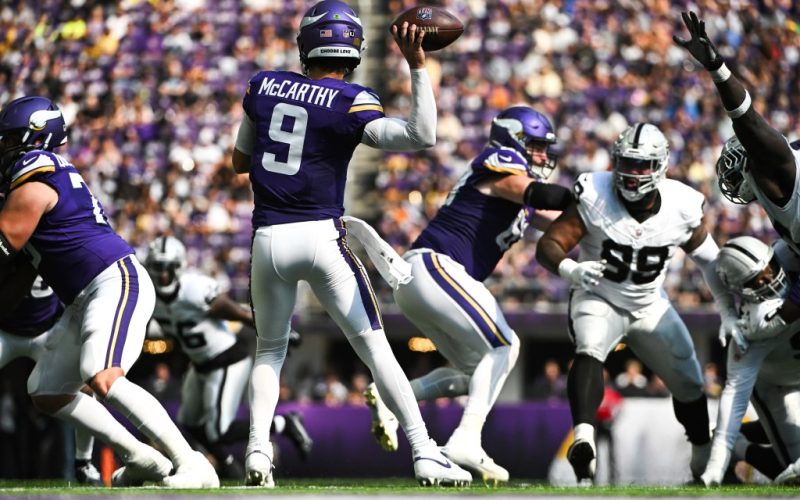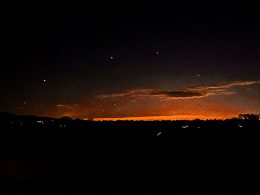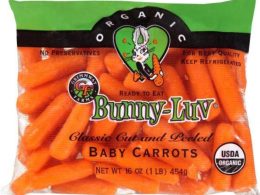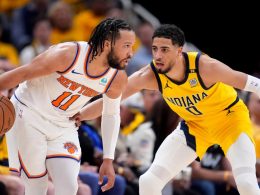Brian Daboll mentioned it multiple times.
In order to win in the NFL, a team needs good quarterback play — something the Giants have lacked all too often in recent seasons.
Regardless of whether Daboll hammering that point after Sunday’s 45-33 win over the Indianapolis Colts was a message to the Giants’ front office, his sentiment remains.
The Giants need a long-term solution at quarterback — and this offseason will be pivotal in finding one.
Where they will find one, however, remains unclear. Their path became more complicated after Sunday’s win dropped the Giants from the No. 1 overall pick in April’s NFL Draft to No. 4.
The final draft order will be locked in after Sunday’s Week 18, and while the Giants’ positioning could change, they are projected by ESPN analytics to have a 0.8% chance of landing the No. 1 pick.
That’s a less-than-ideal reality going into a draft considered weak at quarterback, with only Colorado’s Shedeur Sanders and Miami’s Cam Ward viewed as being worth a top-five selection.
The draft, of course, is not the only way to add a quarterback, though it’s almost always the most cost-effective.
Next season, the Giants will carry a $22.2 million dead cap hit for Daniel Jones, whom they cut in November during the second season of his four-year, $160 million contract. The Giants are expected to have $56.2 million in cap space, according to Over The Cap.
Here is an early look at potential external quarterback options for the Giants.
TRADE UP IN THE DRAFT
If the Giants were to end up with the No. 4 pick, they would almost certainly have to trade up for a chance to draft Sanders or Ward.
The Tennessee Titans, who currently hold the No. 2 pick, also need a quarterback. The Cleveland Browns, who are in line for No. 3, should strongly consider one, even though they owe $46 million in each of the next two seasons to Deshaun Watson, who has struggled with poor performances and serious injuries.
Not in need of a quarterback, however, are the New England Patriots, who would pick No. 1 if the season ended today.
Much was made about the Giants’ interest in trading up with New England last offseason to take Drake Maye, whom the Patriots ultimately drafted at No. 3 overall instead.
The Giants famously used the No. 4 pick in 2004 to draft Philip Rivers, then traded him and three draft picks — including a future first rounder — for Eli Manning.
The pre-draft process will determine how much the Giants like Sanders, a pinpoint pocket passer with solid athleticism, or Ward, who was a big-play machine and Heisman finalist.
OTHER DRAFT PROSPECTS
Should the Giants miss on Sanders or Ward, they could explore the next tier of quarterback prospects — just likely not at No. 4.
No other quarterback cracks the 2025 big board put together by ESPN draft guru Mel Kiper Jr., indicating the Giants would be better off trading down in the first round or seeing which developmental passer is available in the early second round if they decide to take one.
Alabama’s Jalen Milroe is a dynamic runner, as evidenced by his 20 rushing touchdowns in 2024, but his passing remains a work in progress.
Georgia quarterback Carson Beck’s draft stock took a hit with an uneven 2024 season, and he will be coming off of season-ending elbow surgery. Texas’ Quinn Ewers is also an imperfect prospect who could decide to return to college for another season.
LSU’s Garrett Nussmeier, whom many evaluators like, announced last month that he intends to play in college in 2025 in a blow to QB-needy teams.
SAM DARNOLD
The prize of the upcoming free agent class would be Darnold — if the Minnesota Vikings allow him to get there.
Playing on a one-year, $10 million contract, the journeyman Darnold is in the midst of an MVP-caliber, breakout season with a 68.1% completion percentage, 4,153 passing yards, 35 touchdowns and 12 interceptions for the 14-2 Vikings.
He has flourished in coach Kevin O’Connell’s QB-friendly offense but also demonstrated playmaking ability that transcends the system. Still only 27, Darnold, in the right situation, finally looks the part of the franchise quarterback the Jets drafted No. 3 overall in 2018.
When the Vikings drafted J.J. McCarthy with the No. 10 pick in last April’s draft, they did so with plans for him to become their starting quarterback when ready.
But that was before Darnold broke out.
Spotrac projects Darnold’s market value to be a four-year, $141.8 million contract, an average of $35.4 million per year. The franchise tag for quarterbacks is estimated to be $41.3 million in 2025.
Over The Cap projects the Vikings to have $76.5 million in cap space, making both an extension or the tag possibilities for Darnold.
If the Vikings decide to let Darnold go, which seems less likely every week, him signing with the Giants — and returning to MetLife Stadium — would come with incredible intrigue.
J.J. MCCARTHY
Extending Darnold, meanwhile, would make McCarthy expendable for the Vikings.
The Giants are known to have done their homework on McCarthy before drafting wide receiver Malik Nabers with the No. 6 pick last April. In fact, McCarthy told “The Rich Eisen Show” on the eve of the draft that he spent more time with the Giants than any other team.
Could a trade for McCarthy be realistic?
Earlier this week, ESPN insider Adam Schefter said he expected teams to check in with Minnesota about McCarthy, who has not played this season after suffering a meniscus tear during the preseason.
“J.J. McCarthy would’ve been a top, if not the top, quarterback prospect in this draft,” Schefter said on ESPN Radio’s “Unsportsmanlike.”
Schefter said he did not know whether Minnesota would be willing to trade McCarthy, but he contended the Vikings could receive more than a first-round pick for the quarterback.
The Vikings do not have a second, third or fourth-round pick in this year’s draft, which could incentivize them to make a trade.
McCarthy, 21, went 27-1 as a starter at Michigan and won a national championship in 2024. He was considered a very good, but not elite, prospect coming out of college.
He’s undergone two knee surgeries since his preseason injury but remains on track for the start of next season. McCarthy carries a cap hit just south of $5 million next season.
OTHER NON-DRAFT OPTIONS
The other obvious quarterbacks who could become available are more of a mixed bag.
There’s Russell Wilson, who met with the Giants last offseason, only to sign a one-year deal with the Pittsburgh Steelers, who offered him a chance to start.
After returning from a training-camp calf injury, Wilson went 6-1 in his first seven starts with the Steelers but has since lost three in a row. He has 2,334 passing yards, 15 touchdowns and five interceptions in those 10 games.
There’s Justin Fields, who went 4-2 as the Steelers’ starter before Wilson’s return.
Fields, a former No. 10 overall pick by the Chicago Bears, is an elite runner who has shown flashes as a passer but is just 14-30 as an NFL starter.
The 25-year-old Fields has incredible upside, but the Steelers would be the second team to let him go through four NFL seasons, making any significant investment in him a risky one.
And then there’s Kirk Cousins, whom the Atlanta Falcons just benched after he went 7-7 with 18 touchdown passes and 16 interceptions in the first year of a four-year, $180 million contract.
Having now pivoted to rookie quarterback Michael Penix Jr., the Falcons are expected to release Cousins, 36, before free agency opens.
